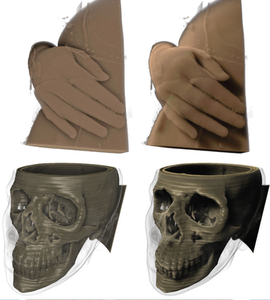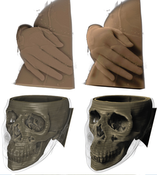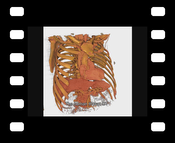Information
- Publication Type: Journal Paper with Conference Talk
- Workgroup(s)/Project(s):
- Date: June 2010
- Journal: Computer Graphics Forum
- Volume: 29
- Number: 3
- Lecturer: Veronika Solteszova
- Event: EuroVis 2010
- Conference date: 9. June 2010 – 11. June 2010
- Pages: 883 – 891
- Keywords: global illumination, volume rendering, shadows, optical model
Abstract
In this paper, we present a novel technique which simulates directional light scattering for more realistic interactive visualization of volume data. Our method extends the recent directional occlusion shading model by enabling light source positioning with practically no performance penalty. Light transport is approximated using a tilted cone-shaped function which leaves elliptic footprints in the opacity buffer during slice-based volume rendering. We perform an incremental blurring operation on the opacity buffer for each slice in front-to-back order. This buffer is then used to define the degree of occlusion for the subsequent slice. Our method is capable of generating high-quality soft shadowing effects, allows interactive modification of all illumination and rendering parameters, and requires no pre-computation.Additional Files and Images
Additional images and videos
Additional files
Weblinks
BibTeX
@article{solteszova-2010-MOS,
title = "A Multidirectional Occlusion Shading Model for Direct Volume
Rendering",
author = "Veronika Solteszova and Daniel Patel and Stefan Bruckner and
Ivan Viola",
year = "2010",
abstract = "In this paper, we present a novel technique which simulates
directional light scattering for more realistic interactive
visualization of volume data. Our method extends the recent
directional occlusion shading model by enabling light source
positioning with practically no performance penalty. Light
transport is approximated using a tilted cone-shaped
function which leaves elliptic footprints in the opacity
buffer during slice-based volume rendering. We perform an
incremental blurring operation on the opacity buffer for
each slice in front-to-back order. This buffer is then used
to define the degree of occlusion for the subsequent slice.
Our method is capable of generating high-quality soft
shadowing effects, allows interactive modification of all
illumination and rendering parameters, and requires no
pre-computation.",
month = jun,
journal = "Computer Graphics Forum",
volume = "29",
number = "3",
pages = "883--891",
keywords = "global illumination, volume rendering, shadows, optical
model",
URL = "https://www.cg.tuwien.ac.at/research/publications/2010/solteszova-2010-MOS/",
}


 Paper
Paper

